It’s not hard to find good places to drink in Tokyo. There are no religious or social strictures against imbibing: quite the opposite, as office mates are encouraged to bond by boozing. You can get a decent bottle of wine or whiskey at most convenience stores. But why settle for good when you can pursue greatness? In the Big Mikan, you can find places to delve into world-class collections of whiskey, sake and even Japanese wine, as well as the sort of impeccably made cocktails that have launched an entire branch of mixology in the US. You can even drink well in a karaoke box. However, as with everything in Tokyo, it helps to have the inside scoop. Here’s a list for your next trip.
Tokyo Whisky Library
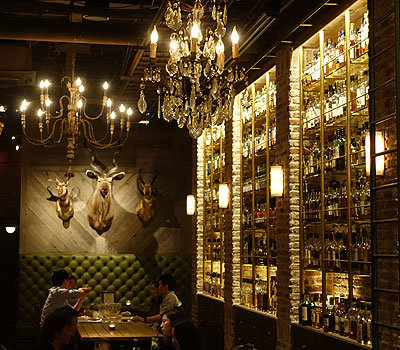

Unlike most Tokyo whisky bars, which are tiny, this shrine to the malt is big and comfortable, with no cover charge. Opened in October 2016, the Whisky Library has a list that runs 73 pages, including four pages of “old bottles”—not just aged whiskies, but bottles that are themselves old, like an Old Pulteney 20-year released in 1988. And many of the 1,200 whiskies on o er aren’t even listed. If you’re seeking a rarity, it’s best to have a conversation with the bartender and hope he finds you worthy of ordering it. If it’s Japanese whisky you’re looking for, you’re in good hands. Though they don’t list any of them, they have several impossible-to-find expressions from cult producer Ichiro’s Malt. To eat, don’t miss the wagyu steak, served in juicy rare slices with a mound of potatoes.
The Apollo
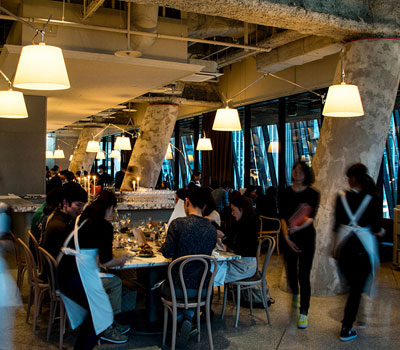

This new restaurant in the spendy Ginza district is a marvel not just for its 120-bottle wine list, but also the reasonable prices in a city that loves its markups. Perhaps that’s because it’s an import of a successful Greek fusion restaurant from Sydney, Australia. Greek wines are well-represented, from Sigalas and Gaia to low-sulfur, new-wave wines like Thymiopoulos Xinomavro Nature 2014; the list is padded out with interesting bottles from France and Australia. It’s a big place (thus not a difficult reservation) with a colorful view of the lights of Ginza at night—and the lamb chops are grilled to perfection.
Ippo
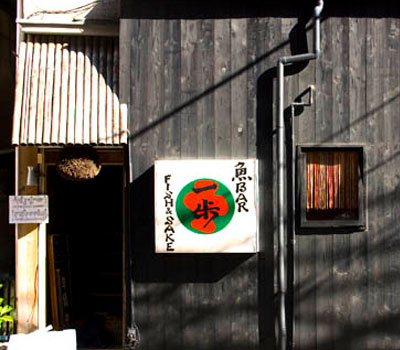

Ippo’s sign promises “fish and sake.” The fish is the easy part. Finding good tiny-production sakes in Tokyo is such a challenge that Ippo co-owner Hideki Takano buys many of them retail from shops with connections to breweries in distant prefectures. Ippo’s list of 42 sakes is one of the city’s most eclectic, filled with obscure, rare bottles—and all are available by the glass. It’s a tiny place; with just 12 chairs at a long bar and three four-tops, it’s worth calling for a reservation. Unlike the sake list, which is printed in English characters, the daily-changing food menu is not, so you may be best off asking for recommendations. Sashimi is excellent (just ask for a “moriawase,” or assortment), and so is the grilled fish—removed from the grill at just the right moment, when the fish is still plenty moist.
Gen Yamamoto
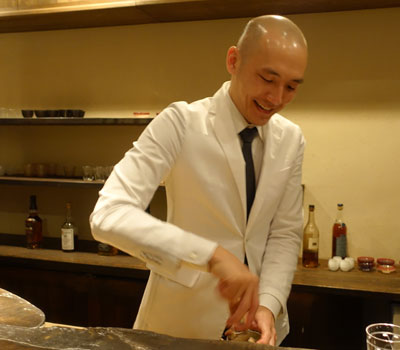

Less a bar than a tea ceremony with booze, Gen Yamamoto is the eponymous parlor of a man who has wowed the bartending world without making what most experts would consider cocktails. Reservations are essential and will get you a two-hour window in which he’ll serve you either four or six drinks, all in small pours (you won’t leave wasted). You will share the small bar with five other people at most, and the only sound in the minimalist space will be Yamamoto muddling and droplets of water falling in a decorative fountain. There is no food, nothing to distract from the drinks. Yamamoto likes to muddle in-season fruit and blend it with just one unusual spirit, such as pear with an ume shochu that was aged in French oak. “I realize people do cocktails with many ingredients but I like it when they’re simple,” Yamamoto says. “It’s the same as art. When I go to the museum, I like simple art.” He also stirs most drinks. “Shaking for most is performance. They don’t need to, but it looks hard.” But simple doesn’t mean predictable: When sweet potato was in season, one standout drink was Domaine Boingnères Bas Armagnac 1984 with roasted, muddled sweet potato and chocolate shavings.
Tsunagu
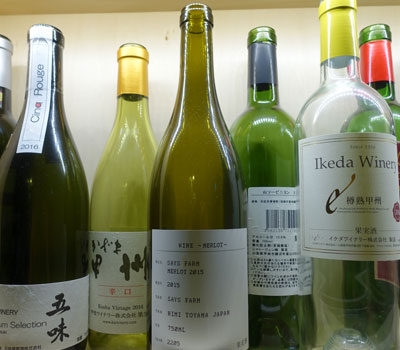

Tsunagu is a wine bar that sells only Japanese wine, which is unusual because Japanese wine traditionally hasn’t been very good. You might feel trepidation if owner Satoko Tamura produces a sake-sized screw-capped bottle and pours the wine into an opaque Japanese-style teacup, rather than a glass. But trust him: That wine—Asaya Koshu 2016—is unfi ltered and slightly cloudy, with an apple character reminiscent of viognier. Tamura looks hard for Japan’s best bottles; for instance, red wine isn’t normally Japan’s strength, thanks to a month-long rainy season in summer, but Tamura taps Hokkaido, the northernmost and chilliest island, where summer is drier, for bottles such as Hokkaido Wine Zweigelt 2015, a peppery, lively red at just 11.5 percent alcohol. It’s nearly impossible to find outside of Tsunagu, which opened in May with a short menu of bar food, like cracker-thin pizza with shirasu fish and wasabi nori.
Pasela Resorts
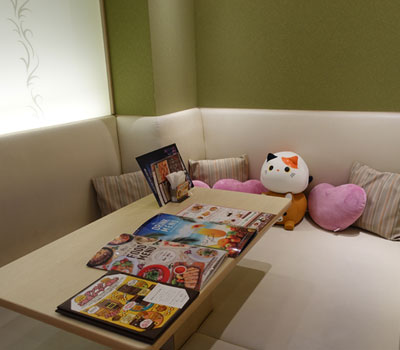

If you want to see how Tokyo actually parties, rent a karaoke box for a few hours with your friends and leave your inhibitions in the lobby. Until recently, a bottle of acceptable low-end whiskey would be the best beverage you could hope for, so the lists at Pasela Resorts are a treat. A karaoke-box chain created to attract young women, who don’t go to bars to drink, Pasela has a decent food menu, even including salads. But for our purposes, the treat is in the beverages. You can (and we did) buy a bottle of respectable Laurent-Perrier Brut Champagne. You can (and we did) buy double shots of Ballantine’s Masters on the rocks. You can (and we did) leaf through the large book of English-language songs. You can, several hours after you started, belt out “You Gotta Fight for Your Right to Party” while holding the empty Champagne bottle instead of a mic. Um, we may have.
W. Blake Gray lived in Tokyo for eight years before moving to San Francisco, where he became an award-winning wine and spirits journalist. He is the US Editor for Wine Searcher and runs the Gray Report blog. He still travels to Tokyo frequently to drink and eat and drink.
This story appears in the print issue of February 2020.
Like what you read? Subscribe today.















